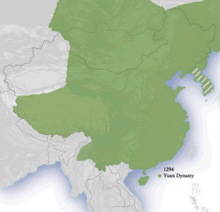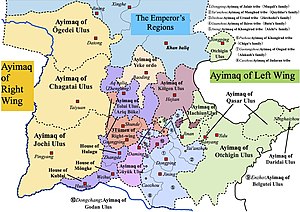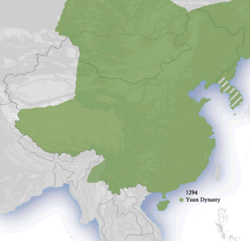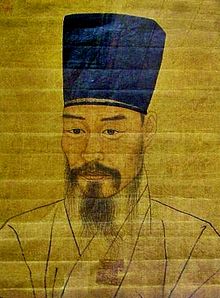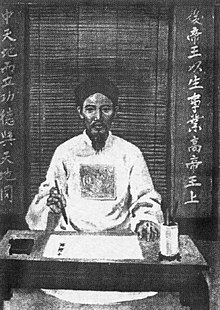In the late 20th century, Indigenous artists and writers experimented with science fiction and images of Indigenous lifeways through different spaces and times. In her anthology, Walking the Clouds: An Anthology of Indigenous Science-Fiction (2012), Grace Dillon outlines how science fiction can aid processes of decolonization. Using tools like slipstream, worldbuilding, science fiction and anthropological First Contact scenarios, Indigenous communities construct self-determined representations and alternative narratives about their identities and futures. Indigenous Futurists critique the exclusion of Indigenous people from the contemporary world and challenge notions of what constitutes advanced technology. In so doing, the movement questions the digital divide, noting that Indigenous peoples have at once been purposefully excluded from accessing media technologies and constructed as existing outside of modernity. The widespread use of personal computers and the Internet following the Digital Revolution created conditions in which, to some extent, Indigenous peoples may participate in the creation of a network of self-representations.
Art plays an essential role into this movement as it communicates more than pretty pictures and something to look at. It is meant to influence opinions, values, and experiences. It is one of the earliest sources of work done with indigenous futurisms. Indigenous futurisms have had a big impact on Chicana art overall. It calls attention to the past, present, and optimistic future. It gives views a new lens to view events on in a visual way. Their work depicts the culture as it has been passed down from ancestors to the present. Indigenous futurisms, as a movement, has given many cultures, like Chicanas, a platform to spread their story.
Grace Dillon, editor of Walking the Clouds: An Anthology of Indigenous Science Fiction, encouraged stories through IIF, the Imagining Indigenous Futurisms Science Fiction Contest.
Chickasaw scholar Jenny L. Davis emphasizes the importance of 'Indigenous language futurisms,' where she shows that Indigenous languages are important to articulating and understanding Indigenous temporalities.
Themes
Indigenous futurisms at its base, envisions alternative futures where indigenous peoples are allowed to reclaim agency, sovereignty, and cultural continuity over culture, which may have been lost to time as well as cultural genocide, or ancestral homeland. Through speculative storytelling, it re-imagines relationships with the land, technology, and spirituality, emphasizing interconnection and harmony, socially, spiritually and ecologically. Concepts of time, space, identity, and belonging are redefined, offering insights into indigenous worldviews and Spiritual practices. Ultimately, indigenous futurisms serve as a powerful tool for recognizing colonialism, genocide, and how to more peacefully coexist with one's gender and environment.
Anti-Colonialism and Cultural Genocide Rhetoric
Much of Indigenous futurism exists as a way to speculate a future without the interference of Western countries, namely Spain, France, and Britain, and explores the idea of what an American community would look like free of the colonization of Europe. Most of these stories include either a community, thriving on the same scale as modern America while being more symbiotic with its environment, or a community of oppressed citizens/refugees who long to return to a time/space where such things were possible.
While in some part, genocide in Indigenous communities might normally only be attributed to the early Americans, however, genocide, is a far broader topic for discussion. The definition of genocide is the deliberate and systematic destruction of a group of people because of their ethnicity, nationality, religion, or race. American Indian boarding schools in the last 100 years have been responsible for beating Indigenous children into learning and accepting customs from America at the time. This interference has since been labeled as genocide, and Indigenous futurist novels often speculate on a future where this culture was allowed to grow and be taught primarily to children, instead of being integrated with American culture and language.
Environmental sustainability
In both the indigenous populations of today and the works of speculative fiction, each individual member of a community is often asked to take part in maintaining and sustaining the environment they are a part of. Nature is often viewed as a cycle, just like the life and death of a member of a community, and thus they can contribute to the cycle they are a part of.
Two-Spirit
The term “Two Spirit” is a modern, pan-Indian, umbrella term used by some Indigenous peoples to describe those who fulfill a third gender ceremonial and social role in their cultures. Those who identify themselves as Two-Spirit are neither a man nor woman, but can carry the traits of both sex represented in one complete body. The term was widely adopted in the 1990s to encompass the various non-binary gender identities and expressions among Indigenous peoples today.
Indigiqueer is a term that is used as an alternative to two-spirit. It does not rely on binary concepts of gender. The term Indigiqueer was created by Thirza Cuthand (Plains Cree) in 2004. Unlike Two Spirit and other recent modern identities, Indigiqueer honors and celebrates one's sexual and romantic orientation as well as their gender identity and expression as they both relate to one's indigeneity There are many indigenous futurisms stories written with indigiqueer themes. For example: How to Survive the Apocalypse for Native Girls by Two-Spirit Métis/Baawiting Nishnaane.
Concept of time
The concept of time in Indigenous Futurisms moves away from Western linear interpretations, both culturally and within the genre of speculative fiction. Time, according to Indigenous Futurists, encompasses and connects the past, present, and future all at once. Artists may explore alternate histories, distant and near futures, separate timelines, time travel, the multiverse, and other topics in which time is not limited to a linear conceptualization. Historical themes of colonialism, imperialism, genocide, conflict, the environment, trade and treaties, which have impacted Indigenous cultures, are recurring and reexamined, creating new narratives in the process. Artists play with questions of race, privilege, and "Whiteness", both in history and within the speculative genre; they are expanded upon, subverted, erased, reversed, etc., thereby linking culture to time, space, and what lies in-between. The term biskaabiiyang (Anishinaabe), used by Dillon, exemplifies how Indigenous creators reflect on the impact of colonization by returning to their ancestral roots, conflating past with present and future, as well as reframing what the world would or could be like.
In other words, Indigenous Futurisms do not solely address the future, but create a range of scenarios and phenomena in which reimaginations of space, time, and Indigeneity are celebrated.
Literature
Literature lends itself to many aspects of Indigenous Futurisms. Many of the stories revolving around Indigenous Futurisms contain an Indigenous main character, however, this does not define the genre, when referring to literature in Indigenous Futurisms we are referring to the Author, or the conceptualized stories, as defined in Dillon's anthology.
Literature is currently the most diverse subject in Indigenous Futurisms, works including: Love After the End, compiled by Joshua Whitehead, a collection of stories and perspectives from queer Indigenous peoples tackling colonialism and the ideas of hope.
Scholarly works including; Knotting Ontologies, Beading Aesthetics, and Braiding Temporalities, by Darren Lone Fight, an examination of Native American literary epistemology and futurisms including an analysis of the Indigenous Star Wars phenomena.
Visual art
An early source of collective Indigenous Futurisms is on the CyberPowWow website, a site launched by Skawennati (Mohawk) for Indigenous artworks starting in 1997 to 2004. It was a precursor to her TimeTraveller™ Machinima series began with a 22nd-century Mohawk man.
Many pieces of Indigenous Futurists artwork contain iconography or symbolism that reference Indigenous oral history. Another major facet of Indigenous Futurists artwork is the adaptation of existing culture and nomenclature. For instance, artist Bunky Echo-Hawk's “If Yoda was Indian” displays show a new perspective on Yoda from the franchise Star Wars.
Kristina Baudemann focuses on storytelling and art and the integration of science fiction into Indigenous art in Indigenous Futurisms in North American Indigenous Art. She says that Indigenous people are resilient and sustainable and their art incorporates those characteristics. One specific Indigenous artist, Ryan Singer (Navajo Nation), paints in acrylic and silk-screens prints. He has two pieces of Princess Leia, from the Star Wars series that portrays the princess as Hopi, acknowledging George Lucas' cultural appropriation of the Hopi butterfly whorl hairstyle. In his first painting, Hopi Princess Leia (2009), he shows the Hopi Princess Leia holding a gun pointing straight at the audience while also staring directly at the audience as well. In his second Hopi Princess Leia, named Hopi Princess Leia II (2010), Leia is seen holding a bigger gun and still looking directly at the audience. Baudemann analyses this depiction and says it creates awareness of the colonial gaze, which is harmful to indigeneity. In these paintings Princess Leia is seen clad in a Hopi blanket, wearing the hairstyle typical to unmarried Hopi girls. She is in front of her pueblo homes protecting them with her gun. Baudemann emphasizes the idea that Hopi homes should be seen as homes and not monuments that can be looked at by outsiders and they should not be appropriated. Princess Leia, in the Star Wars movies, loves her home and tries her hardest to protect it which is why Singer chose Princess Leia to be depicted in these paintings.
Influence on Chicana Artists
Indigenous futurisms touched many communities, one of which is the Chicana/Mexican Community. There art offers an alternative platform that allows the view to see and feel the history of their past and their connection to it in the present. The movement has inspired many hope and aspirations for the future to come.

Amparo Chi is an artist selected to showcase her work in the riverside art exhibit for indigenous futurisms. Amparo Chi is a Chicana artist raised in Los Angeles, a city dense with Hispanic culture in many forms like art. She drew inspiration from murals by Chicano artists around the city and began her journey. Her work, Semillas de la Vida, depicts the culture as it has been passed down from ancestors to the present. All three people presented in the painting are women. One, who is the ancestor is dressed very colorfully with a head and filled with vibrant feathers. The second woman is older and looks to be the grandmother of the last, and youngest girl. The grandmother and her grand daughters hair is connected and seems to be significant as she passes down the culture and history or her heritage. A lot of her work has to do with the cultural impression that people leave on the younger generation. She is very determined to leave behind a legacy of the culture that shaped many. Her upbringing intensifies her views on continuing to pass culture down through community and educating others on its existence and meaning. Her goal is to educate others on the origins of her indigenous roots so they can continue to grow as the definition of indigenous futurisms imply.
Another artist whose work reflects the connection of their heritage to the present in this exhibit is Andrea Ramirez. Her artwork, Arbol de la Pura Vida, captures a family tree of sorts that also happens to center around women. She developed her skills in her community with influence from her family that is Mexican and Costa Rican. There are many pieces in her work that are inspired by Otomi and Nahua traditions. The Otomi are indigenous people that inhabited the central plateau of Mexico. These people are very close-knit, especially with the bonds made between families or godparents. The Nahua are indigenous peoples that had occupied central Mexico. This community also fostered an environment of closeness between families. Being raised by parents from each of these cultures is clearly shown in her artwork that illustrates a family tree. It is a rather unique depiction due to the shape of the family tree. It is very colorful and decorated with other plants or fruit. Ramirez's work, Arbol de la Pura Vida, emphasizes to strong familial connects that are formed within this culture and that it remains many generations later.

Both artists grew up in very culturally rich areas where they had the ability and surroundings to learn about their culture and what it meant to them as they got older. They each communicate through their artwork their perspectives of their culture and how it will continue in the future. It seems to be very important to each that younger generations continue to keep the culture and everything that it encompasses alive. Without newer and younger generations continuing to practice the cultural traditions or beliefs then the culture would gradually die out. Art is a way to emphasize the meaning behind their urgency to continue their heritage and keep in touch with the history that their ancestors have lived through so that the next generations can keep growing.
Film
Indigenous Futurisms in film reflect non-colonial encounters such as utopian sovereignty and dystopian assimilation. The continued development of Indigenous Futurists frameworks account for the diversity of creative efforts and histories between the First Nations, Inuit, and Native American filmmakers and communities to influence the outside world.
Some Indigenous Futurists films include:
- Wakening (2013 short film) by Danis Goulet
- The 6th World, FutureStates’ film short about Navajo people and Mars colonization.
- The Northlander (2016 film)
- Night Raiders (2021), directed by Danis Goulet
Games
While not as prominent as other mediums, video games provide a more hands-on approach to the teaching and display of Indigenous Futurisms. Representation of indigenous cultures has been part of video games for years, with iconic games such as The Oregon Trail depicting Indigenous peoples. However, the specific genre of Indigenous Futurisms in video games is a relatively new concept and few prominent games fall into this category.
Indigenous Futurists games range from games such as Thunderbird Strike, an action game where you take on the form of the legendary Thunderbird, gathering lightning to destroy mining equipment and factories on a terrorized and barren earth, to games such as Never Alone, which tells the story of a Iñupiaq and an Arctic fox as they explore a dire atmosphere and experience the cosmology of the Alaska Natives for themselves. Thunderbird Strike features significant artistic components and lots of indigenous imagery. The creator of the game, Elizabeth LaPensée, calls the art style "Woodland" or "X-ray," after Anishinaabe artistic styles. The game offers a form of protest specifically against the oil industry. Additionally, the popular game Fallout: New Vegas features a DLC titled Honest Hearts that showcases Indigenous culture in a dystopian future. Various tribes exist in the new region of Zion Canyon and the connection to nature is showcased with rain and friendly dogs being introduced to Fallout: New Vegas for the first time.
There has been controversy surrounding representation of Native people in video games, and iconic games such as The Oregon Trail have depicted Indigenous cultures to be dangerous and violent. Many new video games have begun hiring consultants from the Native community to ensure accurate representation, with the popular video game Assassins Creed III collaborating on the game with the Mohawk Nation. A recent Indigenous Futurists game, Terra Nova, was produced by Maize Longboat, a member of the Mohawk tribe, and many other indigenous people have been engaging in the production of video games centered around indigenous themes.
Indigenous Futurisms also manifest themselves in physical games as well, Coyote and Crow, is a tabletop role playing game created by Connor Alexander, A native Cherokee who has had a large portion of his culture taken away from him by colonialism. The setting is in an America far in the future that has been completely free of contact with the eastern hemisphere of the world. Culture and technology have allowed us to be completely influenced by indigenous beliefs and ideals. And America becomes a country without borders that lives in complete harmony with the cycle of life and death.
Virtual reality
Virtual reality (VR) is a medium in which the concept of screen sovereignty can be used to combat misrepresentation of Indigenous people in media. Indigenous VR makers are shaping the culture of technology through VR to properly represent Indigenous people and their culture. Currently, white media creators dominate the digital media field and digital technology industries. Indigenous Matriarch 4 is a virtual reality company that provides Indigenous people with the tools they need to participate in and remake the virtual world. Because Indigenous people are often misrepresented in media, VR has become a place to creatively express Native American culture and ideas. Indigenous VR has also provided Indigenous people with the opportunity to be leaders in a new technology field, and to be involved in technology fields that previously excluded them and that had very little representation of Native American and Indigenous communities.
Virtual reality is being used to create space and capacity for Indigenous creatives to tell their stories. VR is used by many Indigenous practitioners to reimagine traditional storytelling and express themselves and their culture, promote health and wellbeing, and foster self-esteem and pride. New virtual platforms have also been created that retell significant moments in Indigenous history as well as connect to the present, like the platform AbTeC Island (Aboriginal Territories in Cyberspace).
The 2167VR Project (2017), in partnership with the Initiative for Indigenous Futures (TIIF), commissioned the works of many Indigenous artists such as Danis Goulet (Métis), Kent Monkman (Cree), Postcommodity and Scott Benesiinaabandan (Lac Seul First Nation), notable for his work Blueberry Pie Under a Martian Sky. This immersive project exhibits virtual reality works set 150 years forward in time, paralleling Canada's 150th anniversary, each offering a different perspective on the role Indigenous peoples and identities will have in building the future.
Exhibitions
To increase this movement's visibility and bring attention to Indigenous voices, the Institute of American Indian Arts Museum of Contemporary Native Arts (IAIA MoCNA) showed Indigenous Futurisms, featuring the works of 27 contemporary Indigenous artists. Following the pandemic, the MoCNA has transferred the collection to an online gallery and made available a VR experience that the public can access through their devices.
Related movements
The term Indigenous Futurism, now called Indigenous Futurisms since 2012, was coined by Grace Dillon, professor in the Indigenous Nations Studies Program at Portland State University. The term was inspired by Afrofuturism and Africanfuturism, all of which encapsulate multiple modes of art-making from literature to visual arts, fashion, and music.
Indigenous Futurisms are also connected to Chicanafuturism, "a spectrum of speculative aesthetics produced by U.S. Latin@s, including Chican@s, Puerto Ricans, Dominican Americans, Cuban Americans, and other Latin American immigrant populations. It also includes innovative cultural productions stemming from the hybrid and fluid borderlands spaces, including the U.S.-Mexico border."
